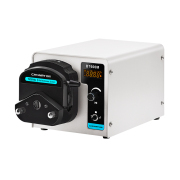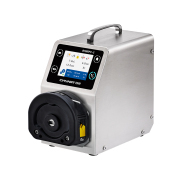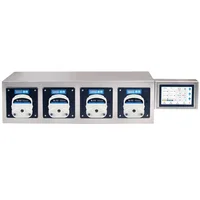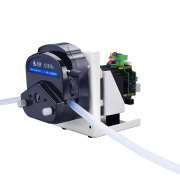Chonry Peristaltic Pump
Peristaltic Pumps
Peristaltic Dosing Pumps
There are two types of peristaltic dosing pumps available on the market. Each type of pump is unique. A peristaltic dosing pump delivers an exact dose of a liquid to a specific part of the body, either by infusing or dispensing. The two types of pumps have different characteristics and benefits. This article discusses the differences between each type. Here are the main advantages and disadvantages of each type of pump.
The B Series: This line of peristaltic dosing pumps offers a 12-litre-per-hour (LPH) flow rate and a pressure range of 3 Bar. Its B-FCD model is equipped with a built-in CD control. The ePool series: these pumps are equipped with built-in pH and Rx controls. These pumps use suction-compression created by rotors in a Santoprene (r) tube. They have a low energy consumption of 6-10 W and a maximum operating pressure of 3 bar.
The peristaltic metering pump has a wide chemical compatibility. The peristaltic pump features high-performance hoses made by ProMinent. These hoses are available in a variety of sizes and can be used in a wide range of applications. Whether you're working with viscous fluids or solids, peristaltic pumps are ideal for the job. They can be used for laboratory applications and for pharmaceutical manufacturing.
The peristaltic pump uses the principles of peristalsis in many biological systems. In biological systems, the body moves through a tube that is compressed by two or more rollers. The rollers force the body fluid through the tube, which moves toward the pump's outlet. Some peristaltic pumps are continuously running, while others index through partial revolutions. A peristaltic pump may be used to deliver medications to a variety of biological systems.
A peristaltic dosing pump has a range of flow rates between 0.0062900mL/min (1100GPD) and 0.0001720mL/min (270GPD). For the smallest volumes, you can choose a micro peristaltic pump with a DC voltage of 3V/6V/12V. The peristaltic pump has a small size of 10.5x10.5x28mm and weighs just four grams.
A peristaltic dosing pump also offers a higher flow rate, making it ideal for harsh environments. Its small size allows you to place multiple units in the same space, and its control system manages the flow rate. Some dosing pumps are even equipped with a more sophisticated control system. As for the peristaltic pump, it is often the best option for chemical dispensing. A diaphragm pump may be cheaper, but intermittent pumping of chemicals can lead to vapor lock and the pump will lose its prime.
0users like this.







